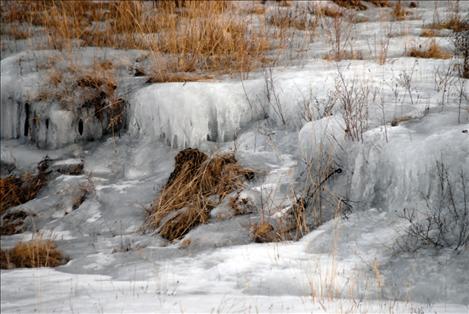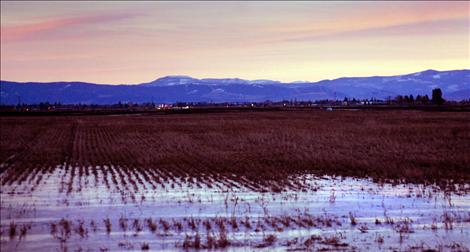Icy conditions cause problems for schools, ranchers
Hey savvy news reader! Thanks for choosing local.
You are now reading
1 of 3 free articles.
Heating, cooling and precipitation patterns over the past month have left Mission Valley residents sliding over pastures, corrals, roads, playgrounds, and pathways that feel like ice rinks instead of solid ground.
Precipitation followed a strong Arctic front in December before it became warmer at the start of January when widespread rain hit the area, Missoula National Weather Service meteorologist Trent Smith said.
“So even though our air was above freezing the ground was actually cold enough to cause the rain to freeze,” Smith said.
The weather has been costly and hazardous in some cases. St. Luke Community Hospital in Ronan reported an uptick in the number of falls reported to the hospital, including some spills that produced broken bones.
At least eight horses and cattle were injured in falls because of the ice, Veterinarian Beth Blevins said.
“I’ve never been so happy to see wind that would help melt the ice,” Blevins said. Slippery conditions also made it more difficult for livestock to access water and food sources, which can contribute to colic.
“They all have at least one story about cows doing the splits,” Lake County Extension Agent Jack Stivers said of cattlemen who recently vaccinated cows before they calve in February. “It’s been dangerous.”
Falls for humans might result in a trip to a hospital but for many pregnant cows that slip and fall on the ice, the cost of vet bills outweigh the value of the animal.
“If the cow hurts herself on the ice she’s not going to be walking around all winter, she’s going to be a hamburger,” Stivers said.
Livestock seem to be taking the brunt of the agricultural impacts of the ice, because a frozen layer did not form in fields of winter wheat that prefer snow cover.
Local schools also have taken precautions against the slippery surfaces. Two years ago the insurance company for the Ronan School District sent eight walk-off mats so those entering school buildings can wipe off snow to prevent melted water from causing slips and falls. This year, the insurance company sent 30 sets of shoe traction devices for staff and faculty.
“When they are worn correctly it is like using tire chains on ice for your feet,” Holmlund said in an email.
This season’s icy conditions produced extra measures to promote safety.
“We’ve actually gone to sanding our playground because the ice is so bad,” K. William Harvey Elementary Principal Ted Madden said.
Ronan ACE Hardware has also seen an increased number of ice melt and Yaktrax purchases, according to Dan Young, store manager.
Lake County Road Department Supervisor Jay Garrick said county workers have been putting in overtime to make sure the county’s 1,200 miles of roads are safely to travel.
“Probably 75 percent gets hit each time we get out,” Garrick said. “We don’t sand everything. We try to concentrate on the intersections, the curves and the hills. We try to put sand up on the straightaway sections. We do rely on the public to realize it’s winter driving conditions and be moderate with their driving habits.”
As the ice thaws, some areas have also seen flooding problems.
“We’re hoping the worst is over,” Garrick said.
The Montana Department of Transportation has not had problems managing the ice, Missoula Maintenance Chief Steve Felix said.
“It’s not been worse than normal,” Felix said. “The next two weeks are traditionally the coldest times of year, but it looks like it’s going to be fairly mild according to weather reports.”
Smith said the National Weather service expects a high pressure system to produce a mountain inversion in the next week that will produce higher than average temperatures in mountainous areas and normal or below average temperatures in valley areas.


















